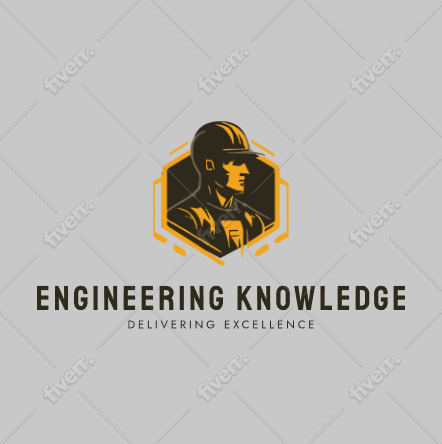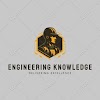What is laser shaft alignment?
- The process of laser shaft alignment utilizes advanced laser alignment systems and tools to ensure accurate and precise alignment of machinery components. Whether you're looking to align motor shafts or other industrial equipment, laser alignment technology offers numerous advantages over traditional alignment methods. With a laser alignment system, you can achieve superior precision alignment, resulting in increased equipment lifespan, reduced energy consumption, and improved machine efficiency.
Understanding Laser Shaft Alignment:
- Laser shaft alignment technology has emerged as a powerful solution for achieving accurate alignment in industrial machinery. The efficiency and dependability of equipment alignment has increased significantly with the introduction of laser alignment instruments and systems.
- laser alignment involves the use of lasers to measure and align the position of rotating shafts. Misalignment in rotating machinery can cause significant damage and lead to costly downtime. Industrial alignment with laser technology ensures that machinery is operating at its optimal level, reducing the risk of wear and tear and improving overall operational efficiency.
- Overall, laser shaft alignment is the most effective and reliable way to ensure machinery is operating at peak performance. With the use of laser alignment technology, industrial alignment has become more accurate, efficient and cost-effective than ever before.
"The use of laser alignment systems also minimizes the need for manual adjustments, reducing the potential for human error."
Laser Shaft Alignment Benefits:
Laser alignment also offers a range of benefits, including:
- Increased accuracy: Laser alignment provides precise measurements, ensuring shafts are aligned to within tolerances of 0.001 inch.
- Reduced downtime: Traditional alignment methods can take hours or even days to complete, causing costly production downtime. Laser alignment can be done quickly and efficiently, reducing downtime and optimizing productivity.
- Improved machinery performance: Proper shaft alignment reduces vibration and wear and tear, leading to smoother operation and improved overall performance of industrial machinery.
- Cost savings: Laser alignment minimizes the need for equipment repairs and replacements, resulting in significant cost savings over time.
Laser Alignment Tools and Equipment:
- Laser alignment requires specialized tools and equipment to achieve precise results. These tools use advanced laser alignment technology to help align machinery and reduce wear and tear.
- Laser alignment tools and equipment come in various types, from basic laser aligners to more advanced measurement technologies. The most common types of laser alignment tools include laser shaft alignment devices, which are designed to measure shaft alignment in rotating machinery, and laser pulley alignment tools, which measure sheave and pulley alignment.
- Laser aligners are another type of laser alignment tool used in machinery alignment. These devices are designed to emit laser beams that can be used to align machinery components accurately. They can be used for both horizontal and vertical alignment and are easy to operate.
- When selecting laser alignment tools and equipment, it's important to consider your specific alignment needs and the level of precision required. Professional laser alignment services can also assist in the alignment process, providing expert guidance and specialized equipment.
Pre-alignment checks of laser alignment:
- First, clean all the machine surfaces that will come into contact with the alignment tool. Any dirt or debris on the surface can potentially throw off the alignment.
- Next, check the alignment of the machine itself. This can be done with a simple ruler or tape measure. The goal is to make sure the machine is level and squared up before you start the alignment process.
- Once the machine is prepared, it's time to look at the shafts. Check for any damage or wear that could affect the alignment. fractures, bends, or other damage can all cause problems during the alignment process.
- Once checked the machine and shafts, it's time to prepare the laser alignment tools. Make sure the batteries are fresh and the laser is clean. Any dirt or debris on the lens can affect the accuracy of the alignment.
- The importance of laser alignment can't be overstated. Properly aligned machinery runs more efficiently and has a longer lifespan. By taking the time to prepare your equipment and use the best tools available, you're ensuring a successful outcome.
Basic Steps to Accurate Laser Shaft Alignment:
1. install the alignment tool on the shaft so that the laser beam is perpendicular to the axis of the shaft.
2. take measurements at three or more points along the length of the shaft.
3. adjust the position of the shaft so that the measurements are within the specified tolerances.
4. repeat steps 2-3 until the desired accuracy is achieved.
5. remove the alignment tool and reinstall the coupling or bearings.
Advanced Laser Shaft Alignment Strategies:
- Laser shaft alignment is a procedure used to align rotating shafts in mechanical equipment. The process entails using a laser alignment tool to take measurements of the shafts and then making adjustments to their position so that they are properly aligned. This procedure is generally used when equipment is first installed or when it is being repaired.
- There are a few different types of laser alignment tools, but the most common is the dial indicator type. This tool consists of a laser housing that is attached to the shaft and a dial indicator that is placed on the surface of the equipment. The laser housing is used to take measurements of the shafts, and the dial indicator is used to see how much the shafts have moved.
- There are a few different ways to set up a laser alignment tool. The most common way is to use two tooling balls that are placed on either side of the shaft. The laser beam is then passed through the middle of the two tooling balls. The "tooling ball method" is the name of this technique.
- Another way to set up a laser alignment tool is to use a “reference point” method. In this method, a single tooling ball is placed on the surface of the equipment. The laser beam is then passed through the middle of the tooling ball. The reference point is then marked on the surface of the equipment. This method is often used when there is only one shaft to be aligned.
- There are a few different ways to take measurements with a laser alignment tool. The "two-point method" is the most often used approach. In this method, the laser beam is passed through two points on the shaft. The measurements are then taken from the middle of these two points.
- The “three-point method” is another way to take measurements with a laser alignment tool. In this method, the laser beam is passed through three points on the shaft. The measurements are then taken from the middle of these three points.
- Once the measurements have been taken, the next step is to make adjustments to the position of the shafts. Shims are the most popular method for achieving this. Shims are thin pieces of metal that are placed under the shafts to raise them up or lower them down.
- Another way to make adjustments to the position of the shafts is to use “feeler gauges”. Feeler gauges are thin pieces of metal that are placed over the shafts to help measure how much they need to be moved.
- The last step in the laser shaft alignment process is to re-check the measurements. This is done to make sure that the adjustments that were made were correct and that the shafts are now properly aligned.


.png)

.jpeg)

.jpg)





.jpg)



0 Comments